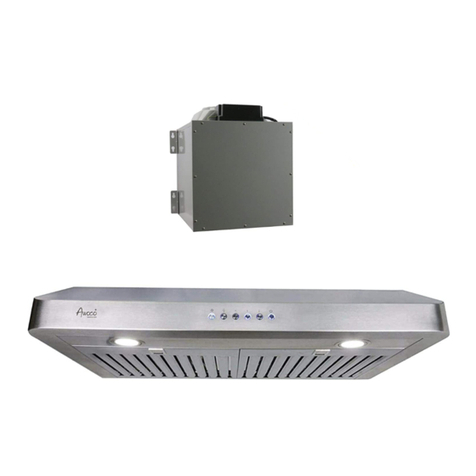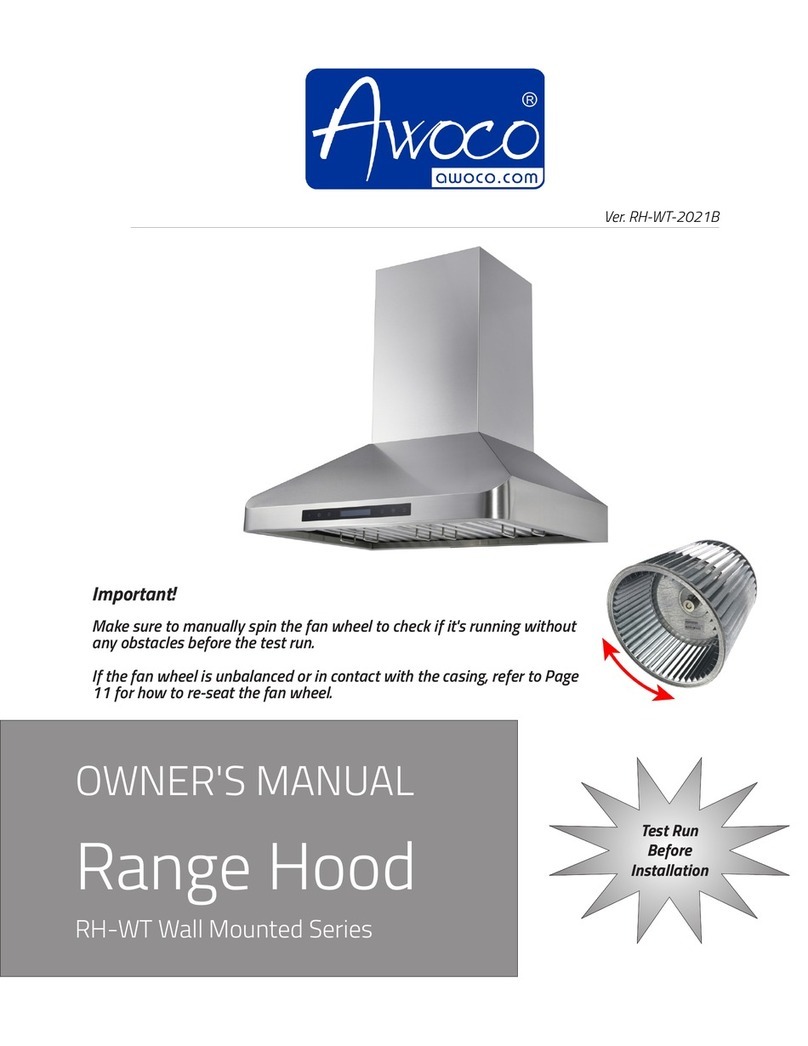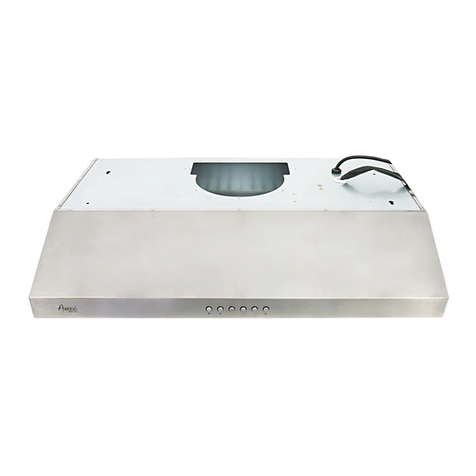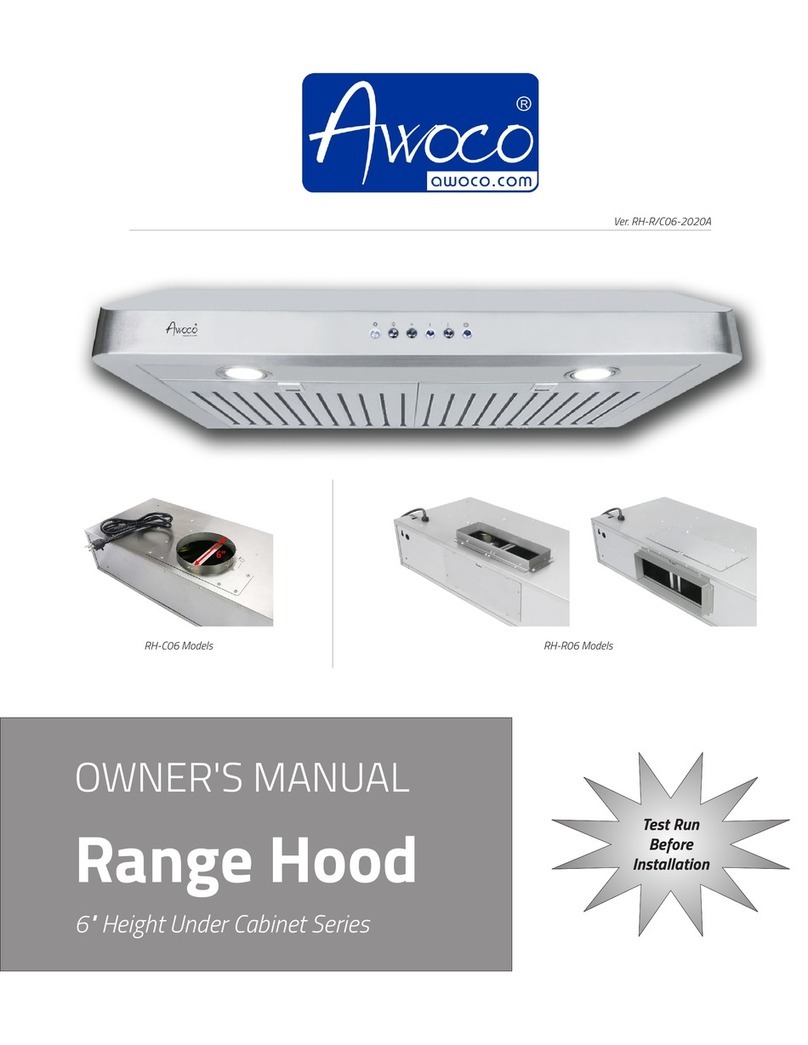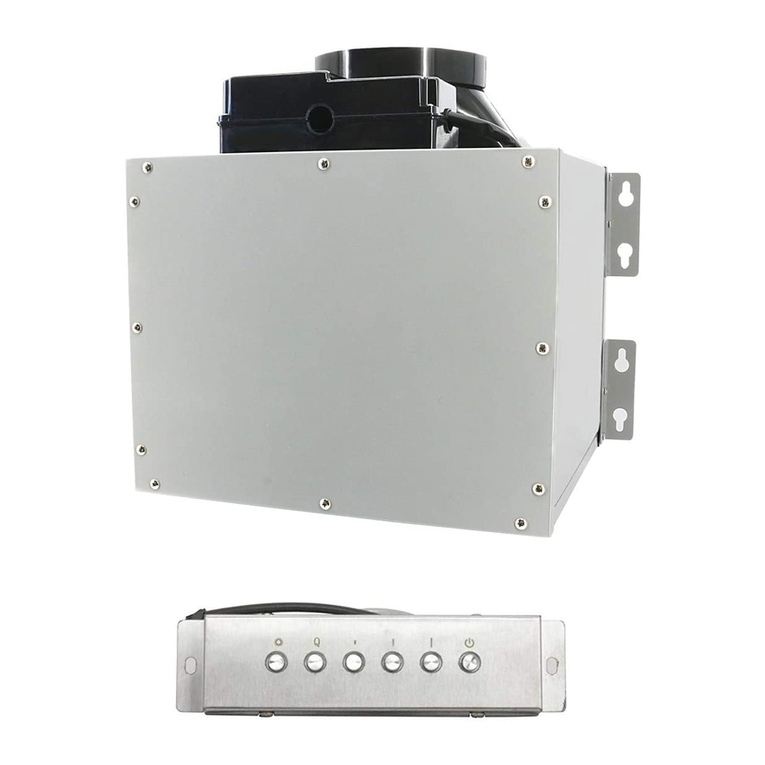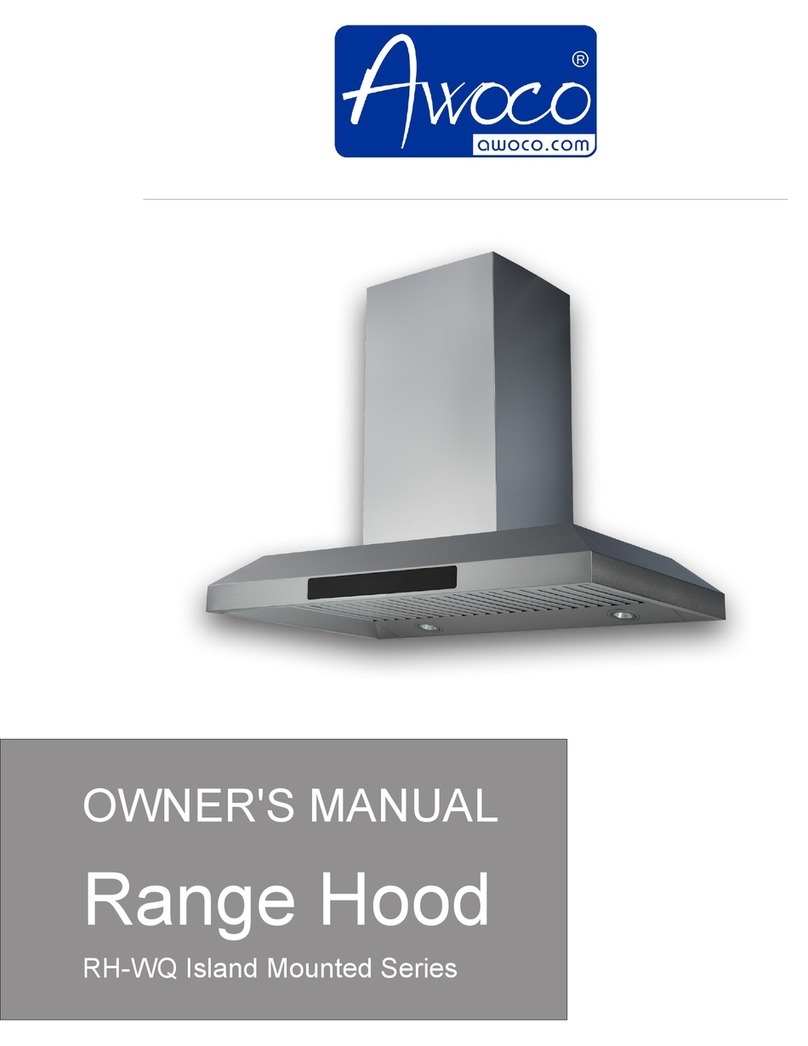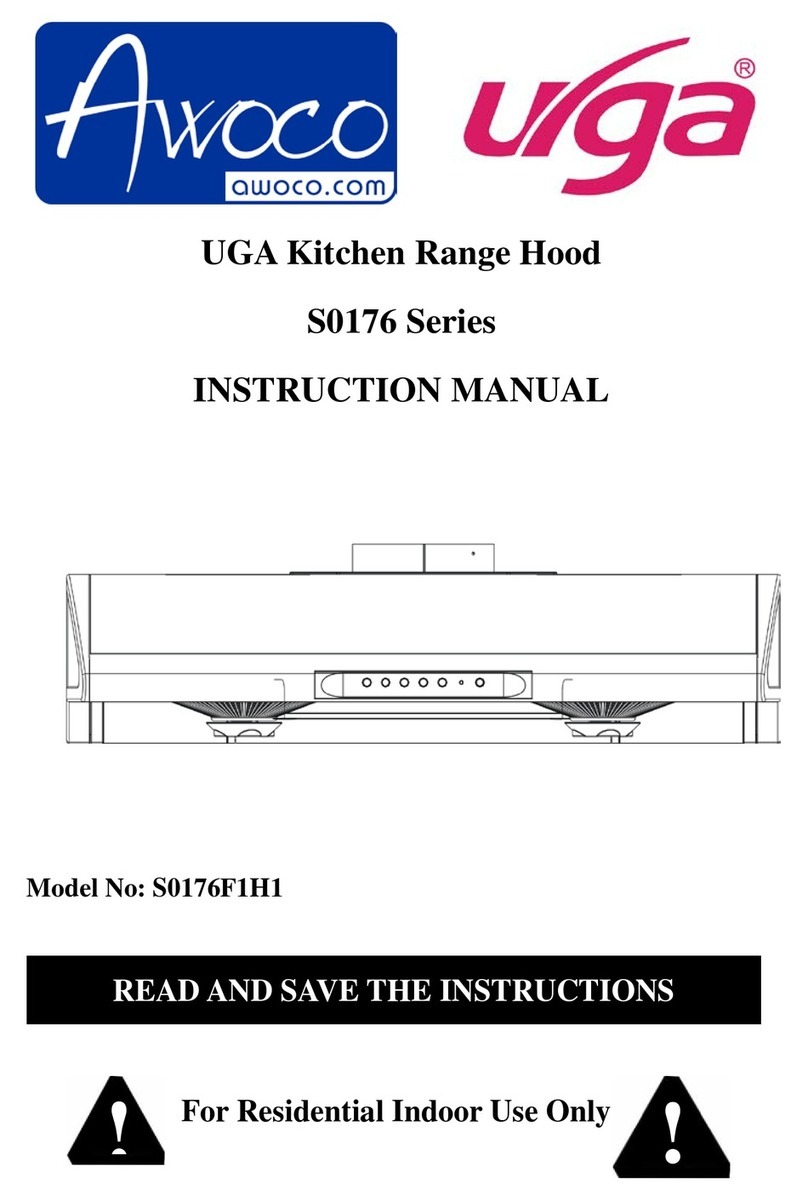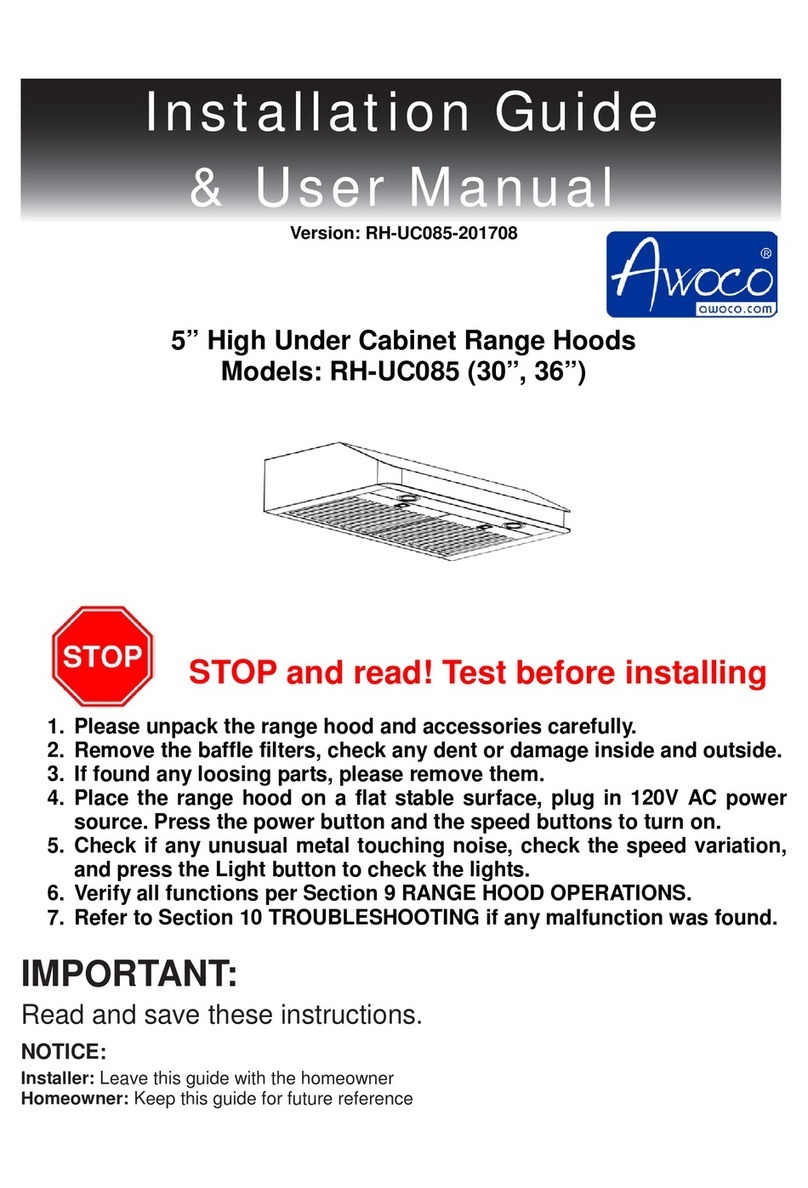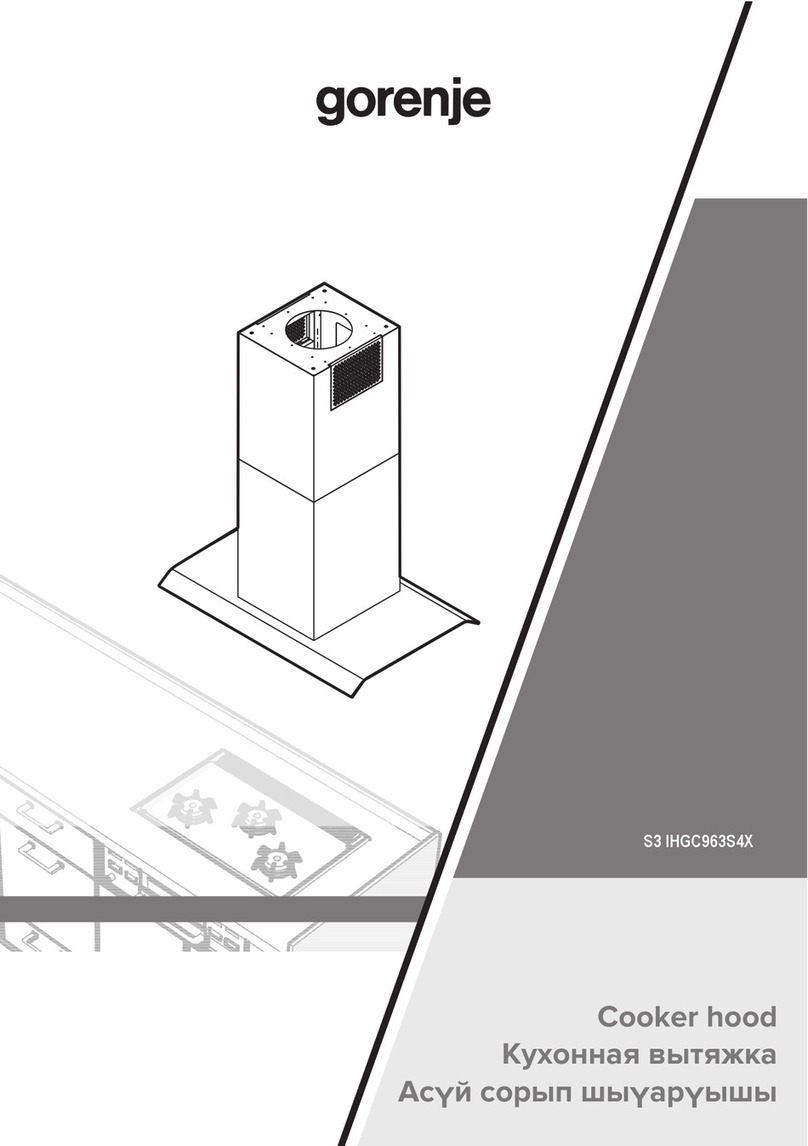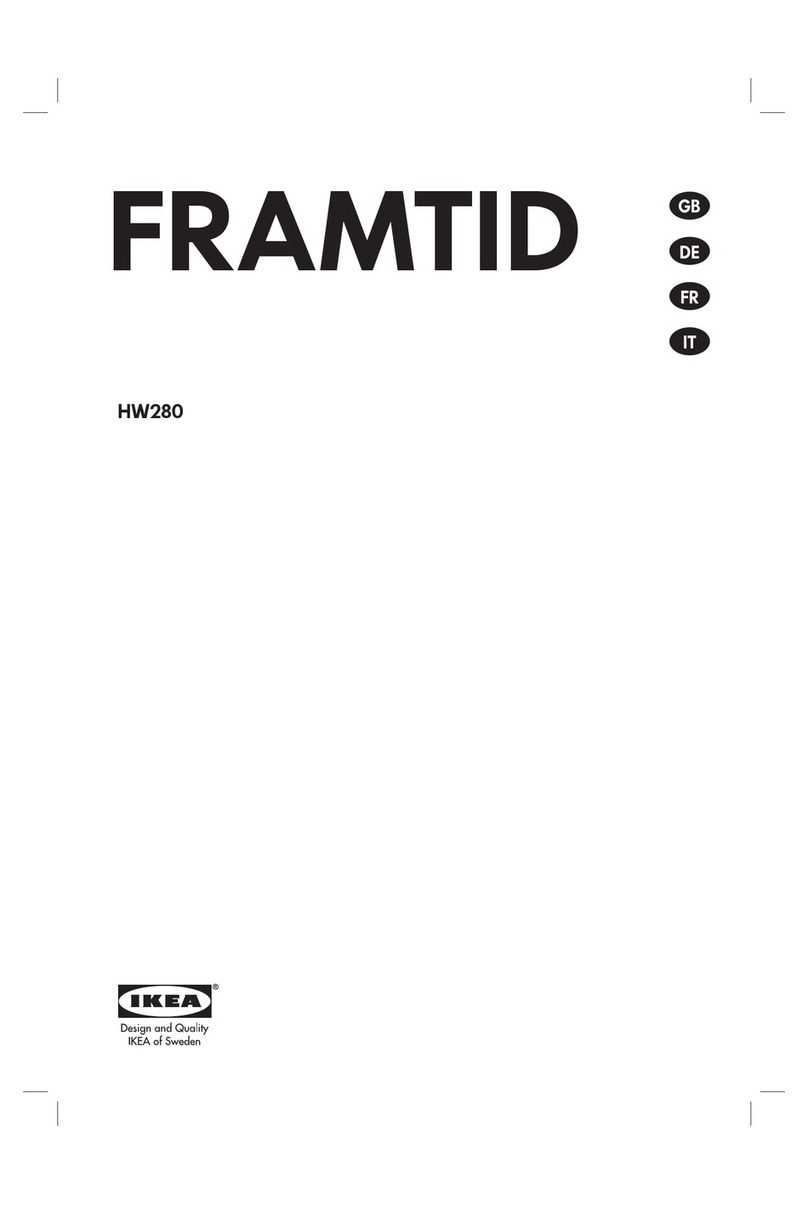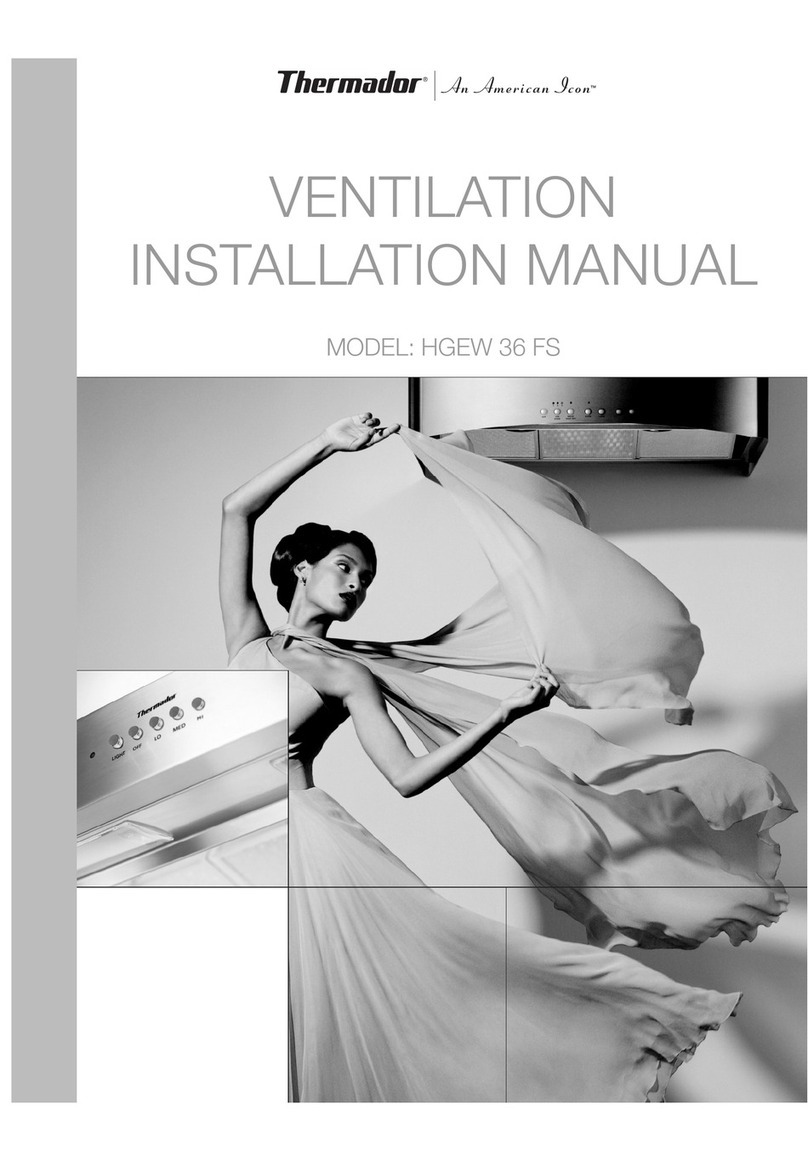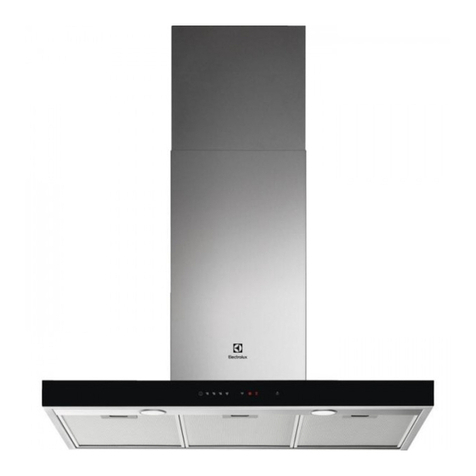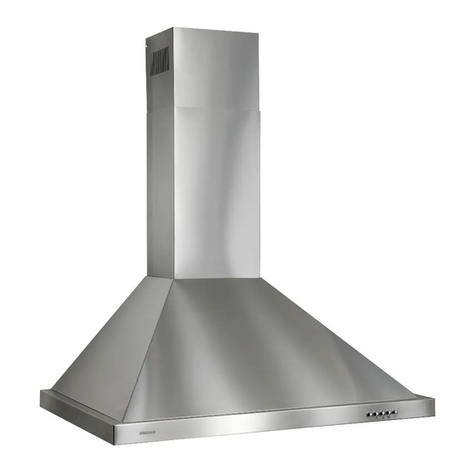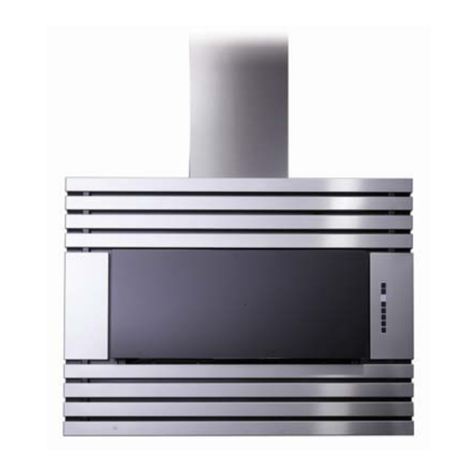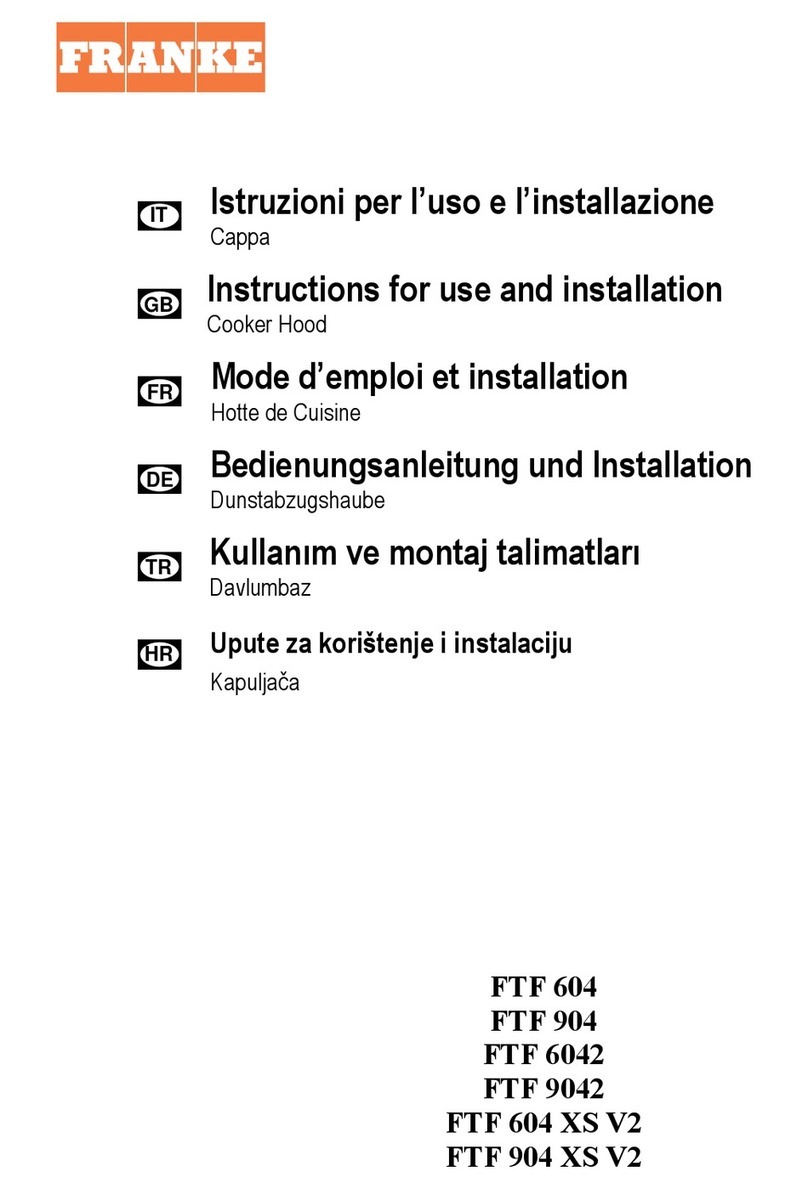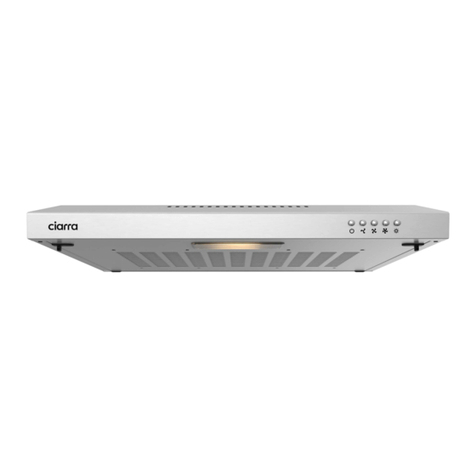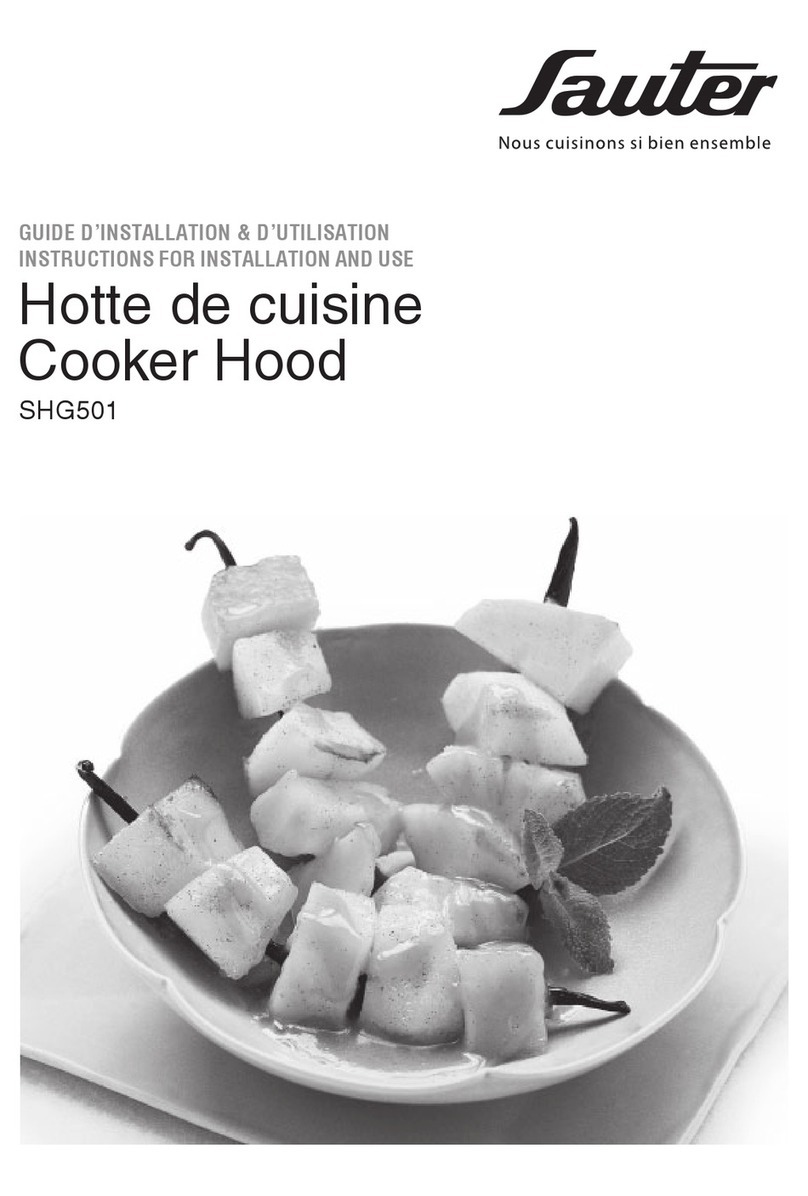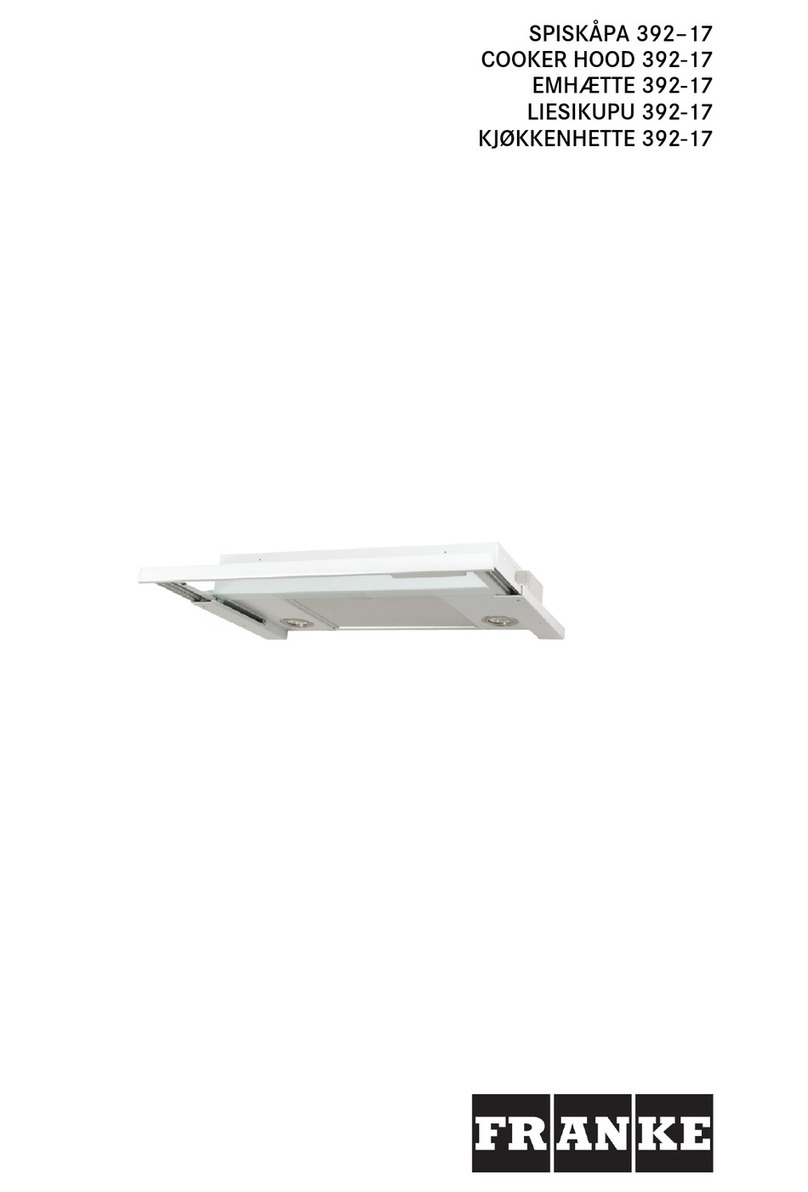
4
IMPORTANT SAFETY INSTRUCTIONS
TO REDUCE THE RISK OF FIRE, ELECTRIC SHOCK OR
PERSONAL INJURY, PLEASE READ THE FOLLOWING
CAREFULLY BEFORE ATTEMPTING TO ASSEMBLE,
INSTALL, OPERATE OR MAINTAIN THE RANGE HOOD:
• Always disconnect, lock and tag the power source
before installing or servicing the range hood. Failure
to do so may result in fire, shock or serious injury.
• Installation and eletrical wiring must be done
by qualified technician(s) in accordance with all
applicable codes and standards, including fire-rated
construction.
• When cutting or drilling into walls or ceilings, please
be careful not to damage any eletrical wirings and
other hidden utilities.
• Verify and ensure the rated voltage and frequency
of the range hood is in compliance with the nearby
power source.
• Always unplug the range hood from the power
source before cleaning it.
• Use the range hood only as directed in this manual.
Do not use it to vent hazardous or explosive
materials or vapors.
• Clean the baffle filters regularly to prevent it become
blocked or clogged. Good air flow is essential for the
range hood to work propoerly.
• Do not install, repair or replace any parts of the
range hood unless you are instructed to do so by
the manufacturer.
• Do not tamper with or modify the PCB.
• This range hood model requires a duct to vent the
air outside. Do not vent the air into spaces within
walls, ceiliings, attics, crawl spaces or garages.
TO REDUCE THE RISK OF A RANGE TOP GREASE FIRE:
• Never leave surface units unattended at high
settings. Boilovers cause smoking and greasy
spillovers that may ignite. Heat oils slowly on low or
medium settings.
• Always turn the hood ON when cooking at high
heat or when flambeing food (i.e. Crepes Suzette,
Cherries Jubilee, Peppercorn Beef Flambé).
• Clean ventilating fans frequently. Grease should not
be allowed to accumulate on the fan or filter.
• Use proper pan sizes. Always use cookware
appropriate for the size of the surface element.
TO REDUCE THE RISK OF INJURY TO PERSONS IN THE
EVENT OF A RANGE TOP GREASE FIRE:
• SMOTHER FLAMES with a close-fitting lid, cookie
sheet or metal tray, then turn off the burner. BE
CAREFUL TO PREVENT BURNS. If the flames do not
go out immediately, EVACUATE AND CALL THE FIRE
DEPARTMENT.
• NEVER PICK UP A FLAMING PAN - you may be
burned.
• DO NOT USE WATER, including wet dish cloths or
towels - a violent steam explosion may result.
• Use a fire extinguisher ONLY if:
• You have a Class ABC extinguisher, and you
already know how to operate it.
• The fire is small and contained in the area
where it started.
• The fire department is being called.
• You can fight the fire with your back to an exit.
TO REDUCE THE RISK OF PERSONAL INJURY IN THE
EVENT OF A GAS LEAK:
• Extinguish any open flame.
• DO NOT turn on the lights or any type of appliance.
• Open all doors and windows to disperse the gas.
If you still smell the gas, call the gas company, fire
department, or 911 immediately.
Read and Save These Instructions
